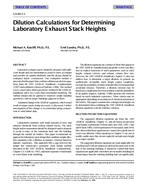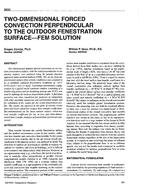The thermal insulation (clo-value) of a whole clothing ensemble is used when evaluating the influence of clothing on thermal neutrality (PMV-index). The clo-value is defined in relation to the whole body surface area, i.e., the unclothed parts of the body are included. The question is, however, if this is also valid for a very non-uniform clothing ensemble or does a correction have to be made before the measured insulation can be used to determine the PMV-index.
One of the objectives of this study is then to investigate if the distribution of clothing on the body has an influence on the subject’s preferred temperature, or does it depend solely on the total level of thermal insulation (clo-value).
Another objective is to determine if a standard measurement of the thermal insulation on a thermal manikin is also valid for very non-uniform clothing distributions.
Five different clothing ensembles with the same total thermal insulation (1.3 clo), but very different distributions of the insulation on the body were studied in experiments with 16 sedentary subjects. The asymmetry was ranging from a nude upper part to a nude lower part of the body. The tests showed that the clothing insulation asymmetry had no significant influence on the ambient temperature preferred by subjects. The subjects regulated the ambient temperature to achieve a mean skin temperature of 33.3°C in all five ensembles. The measurement of the basic thermal insulation value (Icl) on a thermal manikin is also valid even if the insulation is distributed very non-uniform over the body.
Units: SI
Citation: ASHRAE Transactions, 1988, vol. 94, pt. 1, Dallas, TX
Product Details
- Published:
- 1988
- Number of Pages:
- 20
- File Size:
- 1 file , 1.6 MB
- Product Code(s):
- D-DA-88-3114


